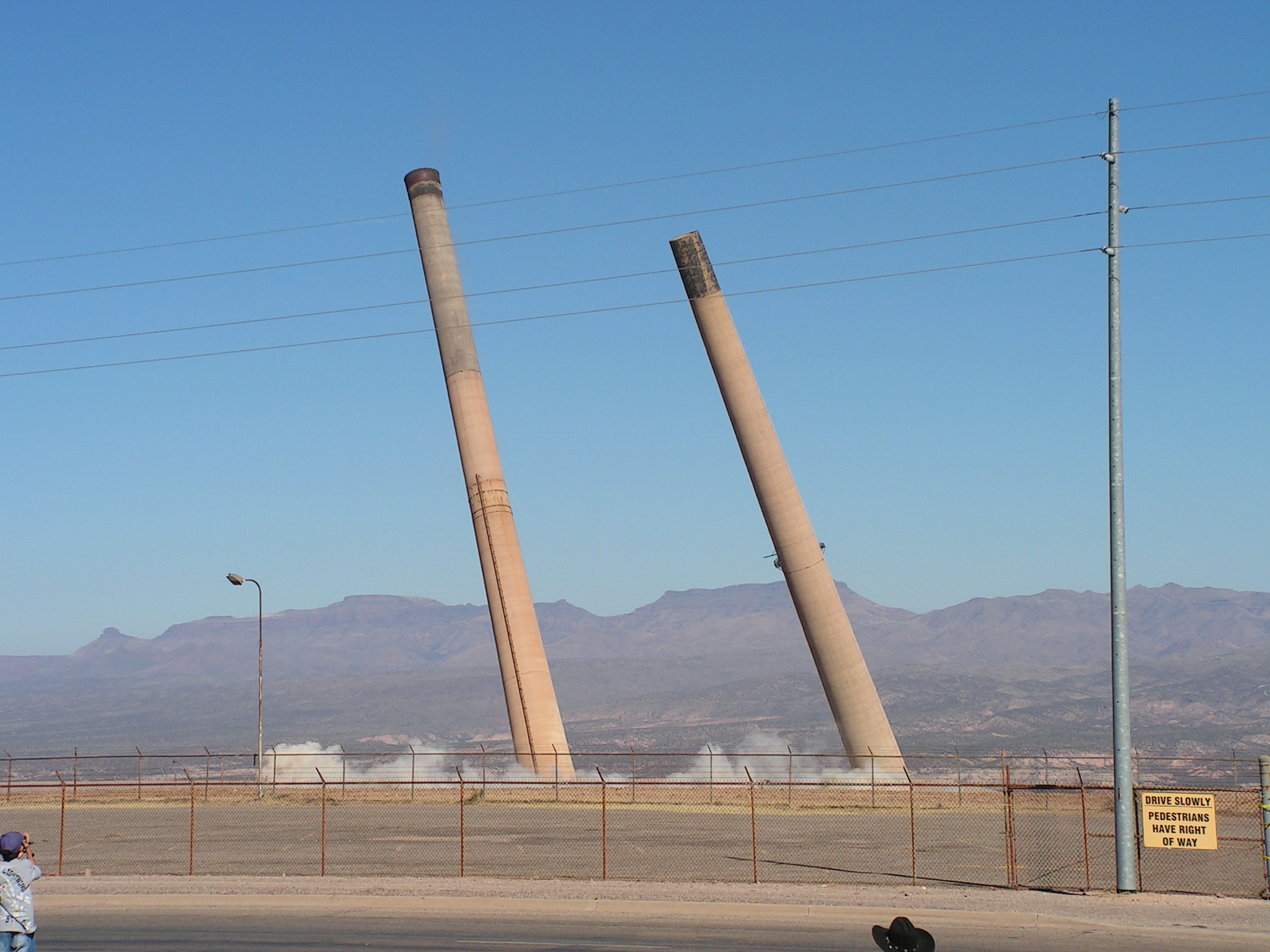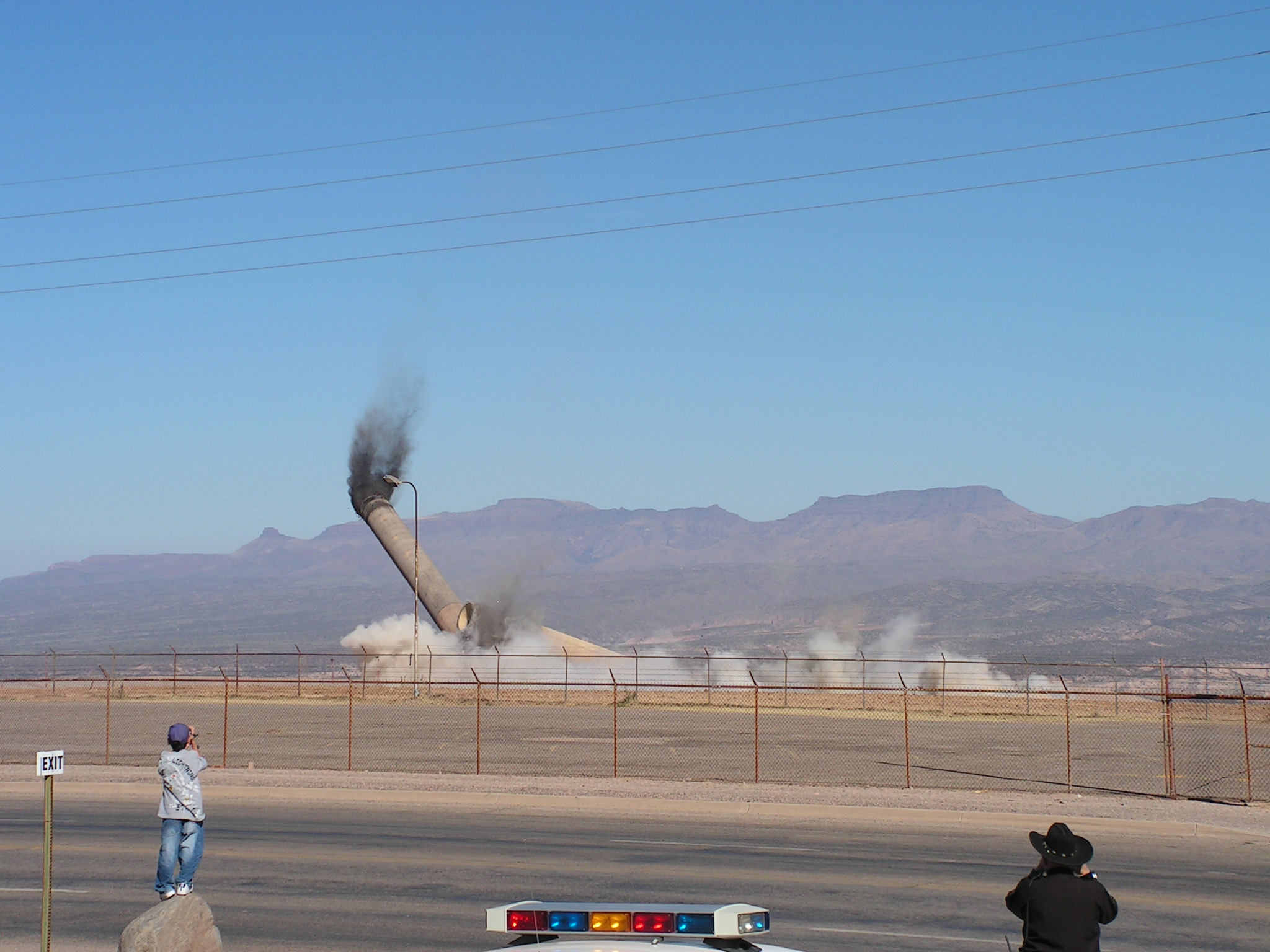Magma Copper Company
A
perspective on a decommissioned mine
Historical Report
20200818
Back to Bill Caid's Home Page
The Experience
Back in the "stone age" I
used to work in an underground mine. Not by choice, mind
you, but the pay was too good to pass up. Being in college
at the time, money was in short supply and I already had a job
working as an EMT at a local ambulance company. Despite
requiring skills and certifications, the pay was, well,
shit. It did, however, offer the ability to work around my
class schedule, and sometimes I even got to study and/or sleep on
the job. But, lots of hours for little pay, schedule
flexibility notwithstanding.
One of the local copper mines came to the engineering college at
the University of Arizona looking for part-time employees from the
engineering student body. The pay was 3 times what I was
getting for doing manual labor. The deal was 2+ shifts a
week and because I needed the cash, I did both the ambulance and
the mine, with the inevitable impact on my physical and mental
well-being. But, at least I could buy beer. In total,
I worked there for a couple of years in two capacities. The
first gig was on the track maintenance crew and the second as a
production "chute tapper". Track maintenance usually
involved repairing rails that had been damaged during a derailment
and the second involved swinging a 15 lb sledge hammer known as a
"double jack". Both were hard, dirty, thankless work and
neither were fun. But it did pay well.
The mine was known to the locals as "San Manuel" for the nearby
village. Formally it was Magma Copper Company, San
Manuel Division. Unlike most of the other copper
mines in this area of southern Arizona which are "open pit", this
mine was underground, also known as a "hard-rock mine". One
of my good friends from college also worked there at the mine, as
did his father, and they obtained an informational brochure on the
mine. Those pages are scanned and included below.
The mine used a technique called block caving where the ore body
was undercut and pulled out from below. The ground
subsequently collapsed into the hole, with cactus, trees and other
vegetation coming along for the ride. The result was a huge,
ugly scar and steep, dangerous cliffs. The mining was done
well below the local water table and without any other actions,
the mine would fill with water. During normal operations,
water was pumped from the lowest levels of the mine and discharged
at ground level. Eventually, the mining operations depleted
the ground water causing a ruckus with the local ranchers.
Mining is big business in Arizona, so you can guess how that story
ended. Magma also ran a smelter in the San Pedro river
valley a few miles from the mine. The smelter produced
plenty of sulphur-based noxious gasses which eventually killed a
large number of a sahauro cactus in the valley. In 2003
after an acquisition, the mine was permanently closed. Above
ground equipment for the mine and the smelter was sold and
eventually relocated to Chile. For
additional information on the mine, see Wikipedia. After the mine was closed, the tunnels and
shafts flooded with ground water and the site was abandoned.
The mine had its own concrete plant for use in underground
reinforcement of the tunnels. Concrete was manufactured on
the surface and then dropped down special pipe and re-mixed at the
destination level of the mine. The concrete management
techniques are described below.
When I worked there, the mine had 6 levels: 2015 (feet below the "collar" at the surface),
2075, 2315 , 2375, 2615, and 2675. Note that to get to the
work area, you had to descend in the "cage" almost half a
mile. The deepest shaft descends to a depth of 3680
feet. I worked on each of these levels at one time or
another and the lower levels are hot-as-hell and very humid.
In the end, only about half of the available ore was
recovered. The ore body was split by a vertical fault
so the upper body was mined first. The second part was
overcome by a combination of environmental and financial issues
and remains in place today.
The photos below are
scanned from the informational brochure, complete with coffee
stains and creases. The publication date of this material
was not stated in the document. Enjoy.

This photo must have been taken early during the mine's
operation. Note the subsidence zone in the left-of-center
area of the photo above. The production headframes used to
hoist ore-bearing muck to the surface are at the upper left.
Magma produced lots and
lots of ore over the years and employed many local miners and
support personnel. In the end, the mine was purchased by BHP
and then shut down. The surface structures were dismantled
and sold or scrapped. The smelter was dismantled, the smoke
stacks were dynamited and the area reclaimed. My cousin Jim
was part of the reclamation and restoration effort and was on-site
when the smelter stacks were blown, see photos below.


And just like that, an era came to a close.
In addition to the still photos, Jim also captured video, see
this link for the video of the stack collapse.
A variety of Youtube videos are available on Magma including the
"definitive history" by Onofre Tafoya, one of the old
timers. See
this link for more videos.
Working at the mine was hot, dirty, dangerous, thankless work that
paid the bills. I had a number of close calls there, but was
never seriously hurt. That said, I am glad that I became an
engineer and never had to work underground again. I did
return to the mine, but as part of a tour run by a school
classmate that worked there. It was an exciting tour, but
brought back some unpleasant memories.
Back to Bill Caid's Home Page
Copyright Bill Caid 2020. All
rights reserved.


































